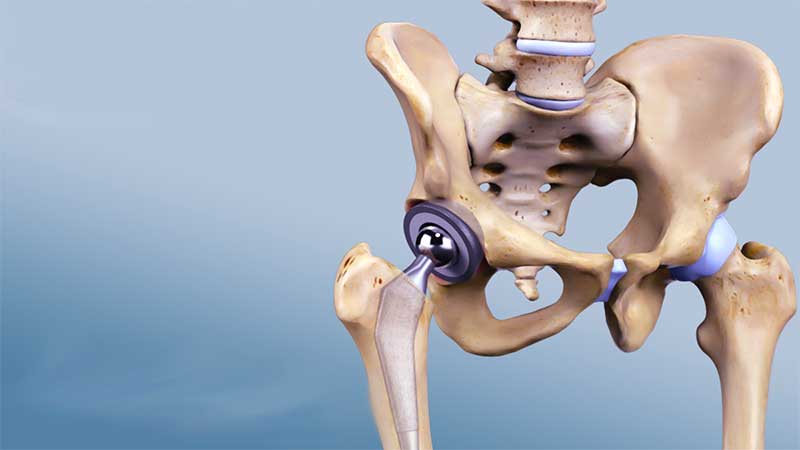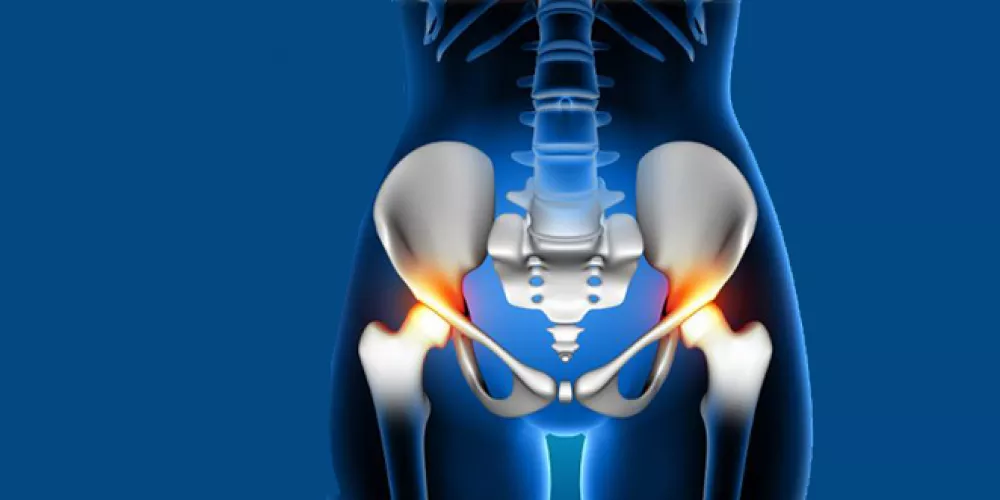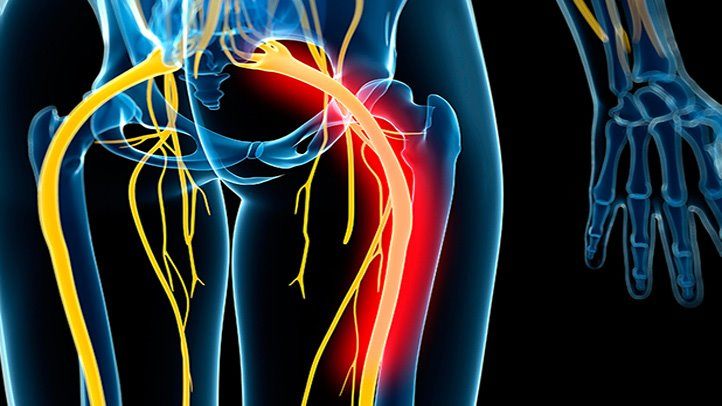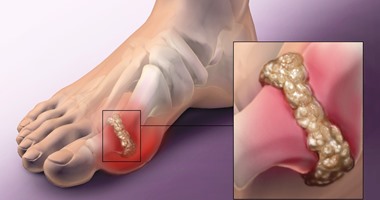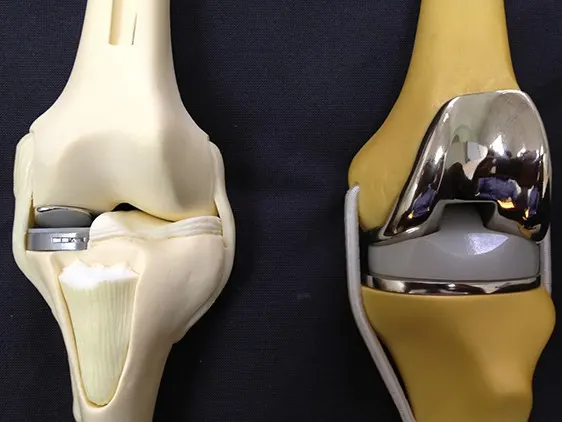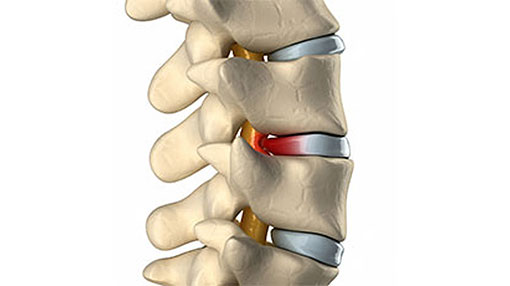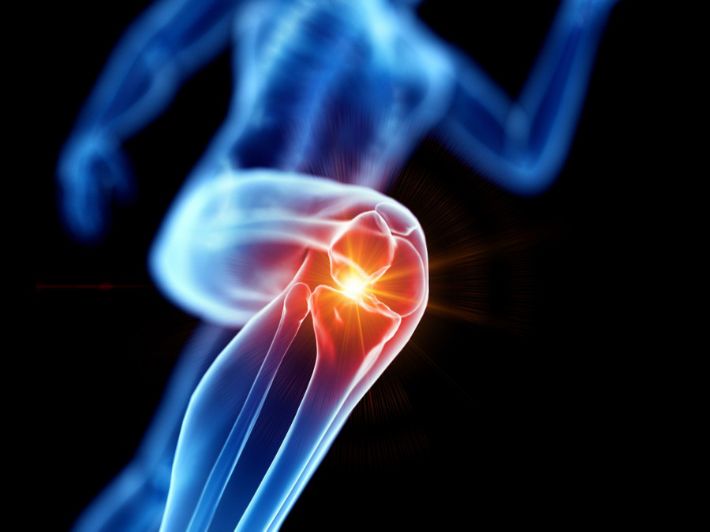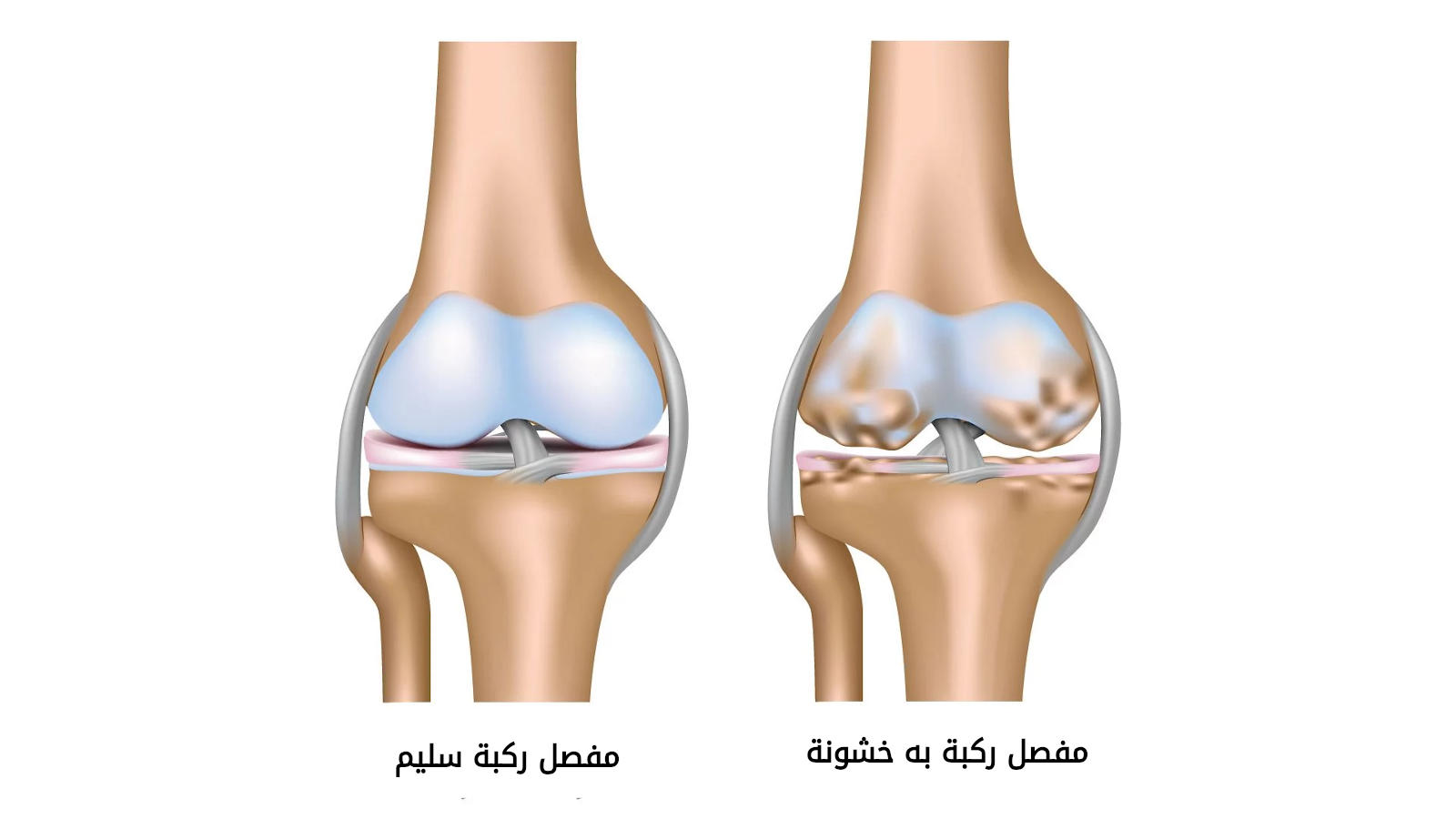!Explore with us hip replacement surgeries and their most important steps
Hip Replacement Surgery, The hip joint is susceptible to many injuries that necessitate joint replacement with an artificial one, and in this article we will get to know in detail the most important hip replacement operations and the steps of performing the operation and the steps followed before and after it, in addition to the success rate of the operation and getting to know the complications resulting from it.
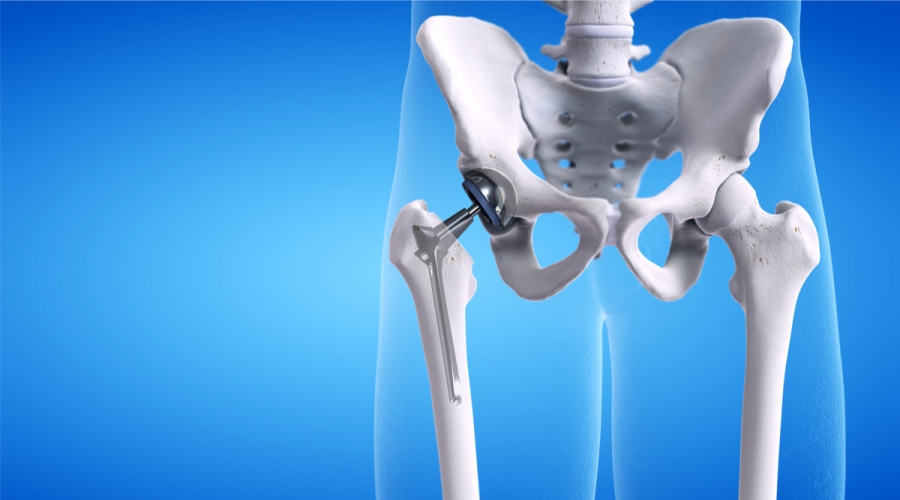
Hip Replacement Surgery
Hip replacement surgery is necessary and important for people with hip joint problems. These operations aim to restore a person’s movement and enable them to regain their normal life after suffering an injury or health condition. These operations are also performed by a surgeon specializing in joint surgery.
The types of hip replacement surgery vary according to the patient’s condition and individual need. In some cases, only a partial replacement of the joint is performed, where a specific part of the affected joint is changed. In other cases, the patient may require a total replacement of the joint, where the affected joint is replaced with a completely new artificial joint that helps fully restore hip mobility.
Hip replacement surgery is one of the surgical procedures that require great effort and high skill from the specialist surgeon. During this operation, the surgeon carefully removes the damaged joint and replaces it with an artificial joint characterized by durability and the ability to restore the natural movement of the hip.
The surgeon’s extensive experience and high skill in performing these operations is crucial to ensuring the success of the surgery and achieving the desired results. These operations also require extreme precision and the use of advanced techniques to ensure the proper and secure installation of the prosthetic joint inside the hip.
Thanks to advances in joint surgery, people undergoing hip replacement surgery can return to their normal lives and perform daily activities without any restrictions or pain. The patient can regain mobility, flexibility, and experience comfort and stability with the new prosthetic joint, and get rid of pain and get ready for a more active life with Dr. Amr Aml. He guarantees you a permanent and safe relief of pain with thermocoagulation. For more information about the operation click here.
Reasons for Hip Replacement Surgery
Hip replacement surgery is a delicate surgical procedure that is resorted to in certain cases. The risks of hip replacement surgery can occur in rare cases and require additional medical action. Here we provide a list of the most important reasons for hip replacement surgery:
- Fractures and Dislocations: A hip fracture or dislocation may occur due to sudden accidents or violent physical interventions. These injuries can leave a long-lasting effect on the joint, such as wear and tear or joint looseness. In such cases, doctors may decide to perform joint replacement surgery to restore normal joint function and improve the patient’s condition.
- Osteoarthritis: Osteoarthritis is a condition characterized by gradual wear and tear of the joints over time. This inflammation causes destruction of the cartilage surrounding the joint, resulting in difficulty moving the joint and severe pain. In advanced cases of osteoarthritis in the hip joint, joint replacement surgery is required to improve the patient’s quality of life and restore normal movement.
- Chronic Synovitis: Chronic synovitis is a condition that causes constant and chronic inflammation of the joints, which worsens with age. This inflammation leads to destruction of cartilage and soft tissue surrounding the joint, making joint movement painful and difficult. In cases of chronic synovitis in the hip joint, joint replacement is considered a surgical option to relieve pain and improve joint function.
- Infection: Infection of the patient’s surgical hip replacement wound may occur. Infection can also reach the tissue surrounding the new joint and cause serious health problems. In case of infection, additional surgery is required to treat the infection and restore joint condition.
Hip replacement surgery should be determined based on a thorough assessment of the patient’s condition and health needs. The decision for surgery should also be based on other potential stages of treatment, such as physiotherapy or pain relief medication. It is advisable to consult a specialist for a comprehensive evaluation and consultation before any surgery.
Preparations Before Hip Replacement Surgery
Hip replacement is a delicate surgical procedure that aims to replace the damaged joint with an artificial prosthesis. Before the patient undergoes this surgery, some necessary preparations must be made to ensure the success of the operation and avoid any potential complications.
One important thing the patient should consider is their weight. Doctors often recommend that overweight patients lose weight before or after hip replacement surgery. The reason for this is that weight loss reduces pressure on the new joint, helping maintain its effectiveness and durability for a longer period.
In addition, the patient must undergo some medical tests before surgery to ensure there are no contraindications to the procedure. This includes the patient’s complete medical history, which is essential to identify any health complications that may affect replacement surgery.
Furthermore, the patient should refrain from taking certain medications prior to surgery. It is advisable to consult the doctor about any medications to avoid in the final period before surgery. This includes refraining from taking blood thinners and anti-inflammatory drugs, as these drugs can increase the risk of surgical bleeding.
To ensure the complete success of hip replacement surgery, it is advisable to follow the doctor’s instructions a set period before the operation. Important things to consider in this regard are maintaining a healthy diet and taking necessary vitamins and minerals. It is also preferable to engage in appropriate exercise and follow a healthy lifestyle. Dr. Amr Aml combines extensive experience and advanced technology in thermocoagulation to provide innovative treatment solutions that restore your vitality.
Steps of hip replacement surgery
Some people may have difficulty walking or severe pain in the pelvic area due to hip joint damage. Hip replacement surgery is a procedure that aims to restore joint function and reduce pain. Here are the steps of this procedure:
- Patient preparation:
- General anesthesia is applied to prevent the patient from feeling pain during surgery.
- The patient may be given anticoagulant medications to prevent clotting and reduce potential complications.
- Making the incision:
- The surgeon makes an incision in the hip area, the size of which is determined based on the patient’s condition and surgeon’s preferences.
- X-rays, MRI results, and other diagnostic findings guide the surgeon to precisely determine the incision location.
- Removing the damaged joint:
- The damaged cartilage and tissues around the hip joint are removed.
- Damaged or deformed bone may also be removed and replaced with prosthetic bone.
- Securing the prosthetic joint:
- An approved prosthetic joint is installed in place of the hip joint.
- The joint is secured using screws or special wires.
- Closing and healing the wound:
- After installing the prosthetic joint, the wound is safely closed using sutures.
- Applying a dressing over the wound helps promote healing.
- Post-surgery care:
- Necessary care is provided to the patient after surgery, including support, rest, and required medication.
- Walkers or crutches may be used to aid the patient’s initial mobility after surgery.

After hip replacement surgery
After hip replacement surgery, there are many precautions and measures that should be taken to ensure proper recovery. Complete recovery from this surgery takes time and continued effort from the patient and medical care team. The patient will be provided with specific instructions by the surgeon and treating medical team.
To avoid any complications after surgery, the patient should adhere to the following:
- Continue taking prescribed medications on schedule as directed by the doctor, do not stop taking them without consulting him.
- Maintain a healthy weight, as excess weight contributes to increased pressure on the replaced joint and may affect recovery time.
- Perform exercises prescribed by the medical specialist to strengthen muscles around the joint and promote overall mobility.
- Avoid strenuous activities that place excessive pressure on the replaced joint, especially in the early stages of recovery.
- Avoid going to an unstable or unprepared place to walk.
- Avoid standing for long periods and make frequent changes in position to reduce pressure on the joint.
- Avoid lifting heavy weights or extreme physical violence that may fatigue the new joint.
- The patient should adhere to follow-up visits scheduled by the treating physician to ensure healing is progressing properly and detect any abnormal changes.
In general, each patient’s recovery after hip replacement surgery varies from case to case. However, most patients notice significant improvement within about three months. Patients are also advised not to worry if mild pain or swelling persists for a certain period of time, as complete recovery and return to normal activity may take longer for some people.
In case of abnormal symptoms such as severe swelling, skin discoloration, unrelieved acute pain, or any complications, the doctor should be consulted immediately. Early detection of any complications can help facilitate prompt and appropriate treatment.
Rehabilitation after hip replacement surgery
Hip joint replacement surgery is a delicate surgical procedure that requires intensive rehabilitation afterwards to achieve full recovery and restore the patient’s functional ability. Physical therapy plays a crucial role in this process, helping to relieve pain, improve mobility, and strengthen muscles around the replaced joint. Physical therapy should be conducted by accredited therapists according to a well-designed treatment plan that meets the individual patient’s needs.
The rehabilitation program after hip replacement surgery is comprehensive, involving a set of tailored physical exercises to regain movement and vital functions. The rehabilitation program starts as soon as possible after surgery, and is tailored according to patients’ progress and needs.
The rehabilitation program after hip replacement surgery includes a variety of exercises and training aimed at restoring the patient’s normal movement and increasing their pain tolerance. The program starts as soon as possible after surgery and is tailored according to the patient’s progress and needs.
Complications of hip replacement surgery
When undergoing hip replacement surgery, some rare complications can occur. Here is a list of some of those complications:
- Infection: The patient may get an infection in the new joint wound. Such an infection can affect the surrounding joint tissue and require proper treatment.
- Blood clots: Blood clots may form in a blood vessel in the joint area. Blood clots can cause swelling and pain in the leg, and may require urgent medical treatment.
- Leg swelling: In some cases, leg swelling may occur after hip replacement surgery, which may be due to fluid accumulation in the tissues and usually subsides over time.
- Leg length inequality: There may be leg length imbalance after surgery, either due to change in pelvic structure or imbalance in the new joint. This problem can be dealt with by wearing special balanced shoes or using compensatory aids.
- Hip replacement surgery complications: Sometimes hip replacement requires performing hip replacement surgery, during which similar complications may occur as those after hip replacement.
No matter the surgeon’s skill and operation success, complications cannot be completely avoided in hip replacement surgery. However, these complications are considered rare and require proper treatment. You should carefully assess the benefits of hip replacement versus potential risks and consult a specialist before deciding to have the surgery.
Hip replacement surgery success rate
When looking at the success rate of hip replacement surgeries, statistics indicate that they are generally successful operations. This rate depends on several factors, including the patient’s condition and comorbidities. The success rate of hip replacement surgeries ranges between 95 to 97%. This means that most patients undergoing this surgery feel significant improvement in pain and mobility after the surgery.
However, we should note that this rate varies from case to case, as success and effectiveness are influenced by several factors. The surgery may be more challenging in certain cases such as the presence of chronic diseases such as diabetes, infections, or dislocations during fixation. In addition, the success of the surgery also depends on the skill and experience of the surgeon. The surgeon should be well versed in the techniques and procedures of the surgery and be able to deal with potential complications.
Experience advanced pain relief in trusted hands, as Dr. Amr Amel provides the latest radiofrequency procedures for fast, comfortable results. For more details on hip replacement surgery success rate and reasons for undergoing it, we advise you to read this article.
What are the healing stages after hip replacement surgery?
During hip replacement, the damaged parts of the joint are replaced with artificial parts, usually made of metal, ceramic, and plastic. After surgery, the healing process is gradual and takes time before the patient regains full mobility. In this article we will discuss the patient’s healing stages after hip replacement surgery.
- Stage 1: After hip replacement surgery, the patient usually stays in the hospital for 3 to 5 days, depending on the speed of recovery and complexity of the surgical case. At this stage, the patient needs adequate rest and bed rest. A compression system can also be placed on the knee to maintain circulation.
- Stage 2: After the patient is discharged from the hospital, they need a period of complete rest at home. It is important for the patient to maintain half bed rest (i.e. sitting and lying in bed with knees bent) for 6 to 8 weeks until surgical wounds heal.
- Stage 3: When the patient feels that the surgical wounds have relatively healed, they can start moving slowly and steadily to return to daily activity. This includes starting to walk slowly, gradually increasing distance covered, as well as avoiding strenuous exercises and activities that place great pressure on the joint.
- Stage 4: After regaining normal joint movement, the patient should build the muscles surrounding the joint. The patient can also perform physiotherapy exercises that strengthen muscles and improve joint stability. These exercises should be under the supervision of a specialist to avoid any additional injuries.
- Stage 5: After about 3 to 6 months from the surgery, the patient feels significant improvement in their ability to walk normally and perform daily activities. Over time, the patient regains full mobility and is able to move without pain or restrictions.
If you want to learn more about hip replacement surgery and the most important healing stages, you can read this article.

How much does hip replacement surgery cost in Egypt?
The cost of hip replacement surgery in Egypt ranges from 140,000 to 150,000 Egyptian pounds. This cost depends on several factors such as the type of surgery (total or partial) and the type of joint used. The cost of a single hip replacement surgery can also vary from one center to another in Egypt. Experience advanced pain relief in trusted hands, as Dr. Amr Amel provides the latest radiofrequency procedures for fast, comfortable results.
Best doctor for hip replacement surgery in Egypt
Hip replacement has become common in orthopedic surgery in Egypt, and this surgery has great needs to find the best specialized doctors in this field. Dr. Amr Amel is considered one of the most prominent doctors specializing in hip replacement surgery in Egypt.
Dr. Amr Amel is an orthopedic consultant with long experience and advanced skills in this field. He is also a recognized professional in Egypt with great appreciation from patients and colleagues. Dr. Amr Amel’s background includes many prestigious academic and practical roles. He currently holds the position of fracture and joint consultant, and is also a lecturer in orthopedic surgery and fractures at Ain Shams University Medical School.
Hip replacement may be a crucial and complex step for the patient, but with an experienced and skilled doctor like Dr. Amr Amel, the surgery involves many carefully studied and important steps. Dr. Amr Amel appears to be the ideal choice for hip replacement surgeries in Egypt, given his extensive experience and high proficiency in this field. Patients looking for this service are advised to contact Dr. Amr Amel and book an appointment for consultation and surgery.

